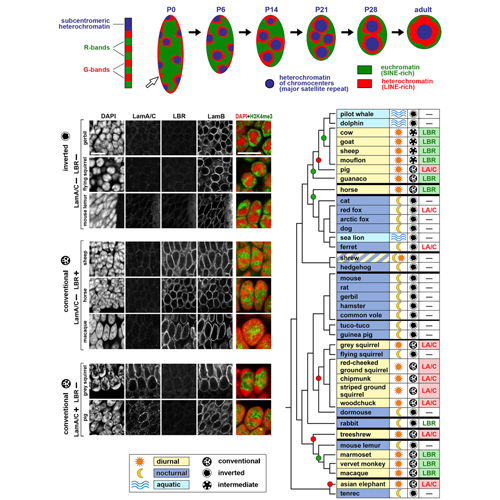LBR and Lamin A/C Sequentially Tether Peripheral Heterochromatin and Inversely Regulate Differentiation
31-Jan-2013
Cell, 2013, doi: 10.1016/j.cell.2013.01.009, Volume 152, Issue 3, 584-598, published on 31.01.2013
Cell, online article
Cell, online article
Eukaryotic cells have a layer of heterochromatin at the nuclear periphery. To investigate mechanisms regulating chromatin distribution, we analyzed heterochromatin organization in different tissues and species, including mice with mutations in the lamin B receptor (Lbr) and lamin A (Lmna) genes that encode nuclear envelope (NE) proteins. We identified LBR- and lamin-A/C-dependent mechanisms tethering heterochromatin to the NE. The two tethers are sequentially used during cellular differentiation and development: first the LBR- and then the lamin-A/C-dependent tether. The absence of both LBR and lamin A/C leads to loss of peripheral heterochromatin and an inverted architecture with heterochromatin localizing to the nuclear interior. Myoblast transcriptome analyses indicated that selective disruption of the LBR- or lamin-A-dependent heterochromatin tethers have opposite effects on muscle gene expression, either increasing or decreasing, respectively. These results show how changes in NE composition contribute to regulating heterochromatin positioning, gene expression, and cellular differentiation during development.











